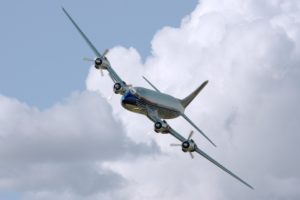
When it comes to producing parts for aerospace, CNC machining has revolutionized the field. The precision and accuracy of CNC machining allow for more intricate designs, reliable production of tight tolerances, and longer part lifetimes. The use of plastic parts in aerospace design has quadrupled in the last four decades thanks to the advancements in aerospace CNC machining.
Challenge #1: Lower fuel consumption and longer flight ranges
Solution: Advanced plastics offer equal strength to that of metal at one-seventh to half the weight. By converting large portions of aerostructure to plastic, an aircraft’s weight can be significantly reduced without compromising strength. For each pound of reduced weight, $1,000 is saved in fuel costs over the life of the airplane. Lighter planes have farther flight ranges, lower emissions, and lower maintenance costs due to improved efficiency. These plastics are often difficult to manufacture through injection molding or additive machining. Aerospace CNC machining, however, can easily produce the most technical and complex parts while keeping tight tolerances.
Challenge #2: Aerospace’s constantly fluctuating demand for parts and low-quantity machining runs that can cause repair backlogs
Solution: Airplanes have literally millions of parts, so it isn’t practical for maintenance crews to keep a large amount of each part on hand. Instead parts are ordered in batches, and specialized parts may need to be ordered on an as-needed basis. This can greatly increase repairs costs as planes need to be grounded longer for maintenance. Furthermore, parts are constantly being redesigned and upgraded, so it often isn’t cost effective to produce large batches of parts. With aerospace CNC machining, it is easy to produce small or large runs of parts with extreme precision. The machines can be quickly programmed with the latest part design, and with short lead times, replacement parts can be delivered in weeks rather than months.
Challenge #3: Increased safety
Solution: Passenger safety is always a key concern in aerospace design. While engineers typically focus on keeping passengers safe in the event of an emergency, they must now also think about how to protect passengers from health concerns such as COVID-19. Advanced plastics such as Ultem® are increasingly used in aircraft interiors because they are inherently flame resistant and have low smoke emission – two key factors for improving passenger survival rates. They are also extremely durable, easy to clean, and can withstand rigorous sanitization to reduce the spread of viruses. Ultem® and other glass-filled plastics are extremely difficult to machine, however, and require specialized tools and training. As an aerospace CNC machining expert, Reading Plastic can produce dependable, precision parts from any advanced plastic.
Whether you need bearings, fasteners, gears, avionics instrument panels, valve seats and seals, or interior components, Reading Plastic can machine you a solution. With state-of-the-art equipment and strict quality control, you can be certain our parts will perform in the harshest of environments.
If you have a project in mind, call us today at (610) 926-3245 or email .